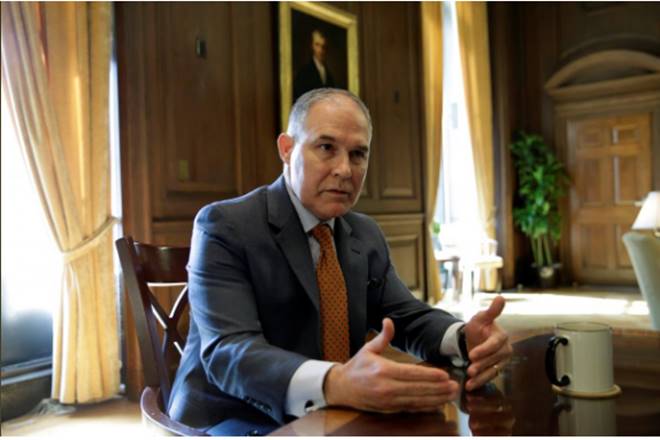Thought Piece

Fuel prices are rising in Europe and beyond as oil rallies and the dollar strengthens. “Giving society cheap, abundant energy would be the equivalent of giving an idiot child a machine gun,” author of 1968 “Population Bomb,” Paul Ehrlich wrote. It is hard to believe that the apocalypse forecast by “Population Bomb” is 50 years old. How many of the current scientific ministers of the Apocalyptic will be proven as wrong as Paul Ehrlich. The increase in carbon automatically increases the earth’s temperature is too simplistic. Earth has many complex systems and there could be other factors playing into climate change that we don’t yet understand, stated Judith Curry. Her further ruminations are significant enough to repeat: “The madhouse that concerns me is the one that has been created by some climate scientists,” Curry said. “The madhouse is characterized by rampant overconfidence in an overly simplistic view of climate change, enforcement of a politically motivated and manufactured consensus, attempts to stifle scientific and policy debates, activism and advocacy for their preferred policies, self-promotion … and public attacks on scientists who don’t support the consensus.” In his time, Paul Ehrlich used all of these tactics, with no compunction.
Steep Oil and Strong Dollar Make Toxic Brew for Global Economies
‘Brutal’ rally in dollar-priced crude hammers governments, strains consumers from U.K. to Brazil
That is because many consumers outside the U.S. face a double whammy when—like now—the dollar gets stronger at the same time that oil prices rise. While petroleum is produced all over the globe, when it is sold to refiners and other buyers it is almost always priced in dollars.
It is, in the words of Brazilian Finance Minister Eduardo Guardia, “a challenging external scenario.”
Brazil is among the handful of oil-dependent countries in Latin America and Southeast Asia that have turned to costly fuel subsidies. Across swaths of Africa, higher fuel costs and weakening local currencies have hit prices for food and electronics.
Fast-rising crude, on its own, has been pressuring global growth for months. Swiss bankUBS figures that today’s international crude price, around $75 a barrel, would boost global inflation by more than half a percentage point, compared with the $50 barrels the world enjoyed as recently as last year.
Brent crude, the international benchmark, has eased off a recent 3½-year high of around $80, on expectations that the Organization of the Petroleum Exporting Countries will boost output when it meets this week. Before that retreat, oil was up more than 20% this year.
There are global winners, along with losers. The U.S., squeezed over the decades in past oil rallies, is looking pretty comfortable this time. In recent years, America has boosted production significantly, making it much less dependent on imports.
Overall economic growth in big crude producers like the U.S. and Canada could rise by almost a third of a percentage point with today’s prices, says UBS.
In import-heavy economies like China and the eurozone, however, growth could slip a tenth of a percentage point, UBS figures.
That may not sound like a significant hit overall, but fuel prices can be particularly painful for specific swaths of any economy. This month, Chinese truckers refused to move goods and blocked roads in a handful of cities, protesting higher fuel costs.
Exacerbating the pain in many countries is a strengthening dollar. The WSJ Dollar Index, a measure of the dollar compared with a basket of 16 major currencies, has strengthened 6% since February.
In Europe, dollar strength against the euro has helped make crude today about 30% more expensive than when oil was at a low in February.
This year’s price increase, though, has been so steep that many drivers are feeling the squeeze. Gasoline prices in Britain rose faster in May than in any month on record, according to RAC, a drivers’ lobby group, which called it a “hellish month.” A lower pound against the dollar and higher oil prices were a “toxic combination,” an RAC spokesman said.
“I fill up two or three times a week. I feel it,” said Cristinel Bulai, an Uber driver in London. “When, in one year, every month you see a little bit more, you say, ‘whoa, whoa.’”
Still, the oil and dollar rally act like a tax, limiting consumers’ discretionary spending. That threatens a pullback in consumption that can eventually hit growth. It can also feed into inflation and pressure central banks to boost borrowing rates. Inflation in Spain jumped to an annualized 2.2% last year from minus 0.2% in 2016, largely due to higher energy prices.
The pain has been greatest in economies where dollar strength has been even more pronounced. In Brazil, gasoline is up 28% and diesel fuel for trucks more than 27% over the past year. The Brazilian real has fallen 11% this year against the dollar.
The two-week strike by Brazilian truckers stranded goods across the country, triggering warnings about possible shortages from grocery stores, hospitals and McDonald’s outlets. To end the walkout, President Michel Temer rolled out the military and promised truckers $3 billion in diesel-fuel subsides and tax cuts.
In Indonesia, where the rupiah has fallen to its weakest level against the dollar in more than two years, fuel prices are an election issue. President Joko Widodo has promised not to raise prices of subsidized fuels and electricity through 2019, when he is expected to run for a second term. In April, he required fuel retailers, including foreign firms Royal Dutch Shell PLC and Total SA, to seek government approval before raising prices they charge at the pump.
Jakarta also said it would dramatically increase diesel subsidies. Thailand and Malaysia—where newly elected Prime Minister Mahathir Mohamed made it a campaign pledge—have both ramped up spending to stabilize pump prices.
“Governments are promising to cap fuel prices to win votes and elections,” said Hak Bin Chua, an economist at Maybank Kim Eng in Singapore.
While Africa is a big oil producer, much of the continent is energy-poor and dependent on imports—and several governments are also contending with pressure on their currencies. In Nigeria, the continent’s biggest crude exporter, a government cap on what drivers pay at the pump has led to gasoline shortages as retailers struggle to pay for refined fuel imports.
In Sudan, the ninth-largest African economy, street protests have broken out over soaring bread prices, pushed up by the rising costs of delivery and wheat imports. Fuel prices have soared fivefold in recent months, bringing weeks of long, overnight lines at gasoline stations across Khartoum and other cities, as the government struggles to pay for fuel imports.
Hussein Adawi, a sugar importer, said he and his rivals also face higher operating costs as they spend time sourcing dollars to finance both fuel purchases and sugar imports. Sometimes that takes several weeks for a single shipment.
“We can’t even get fuel to deliver supplies to customers,” he said.



